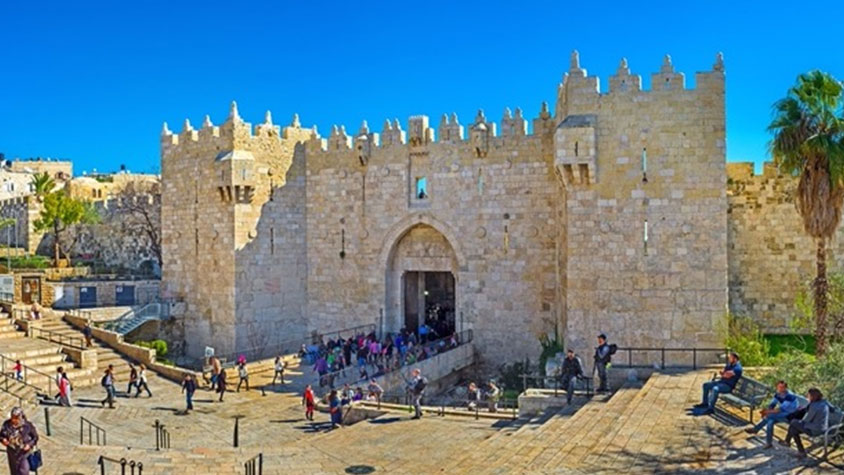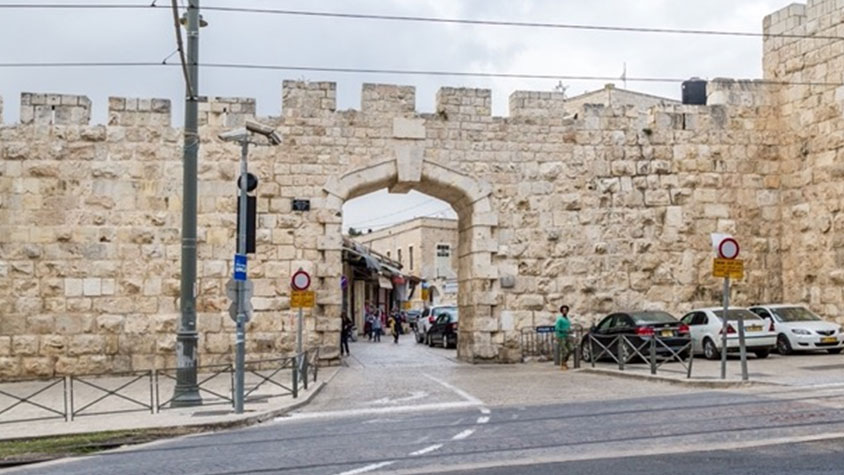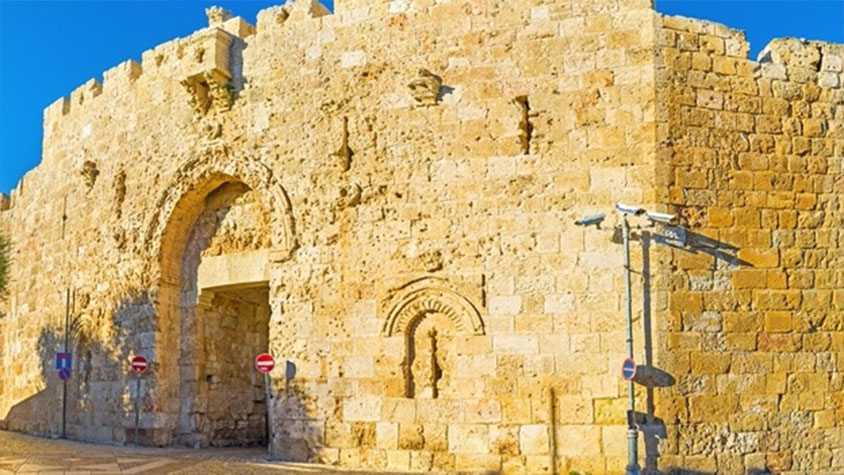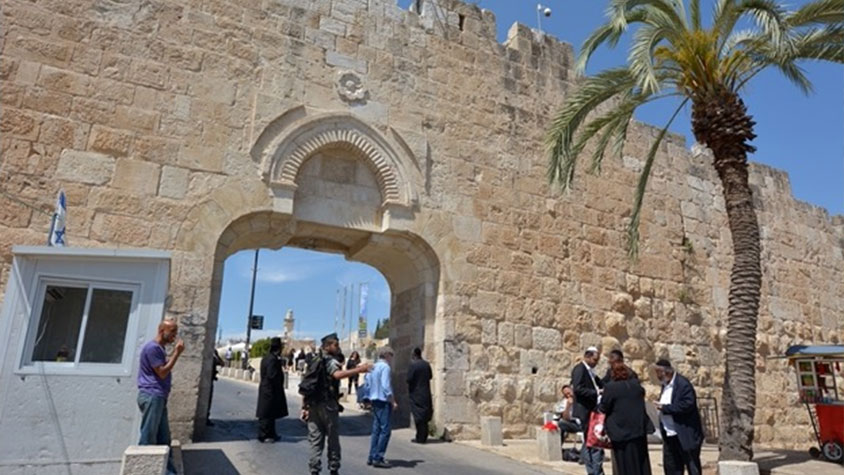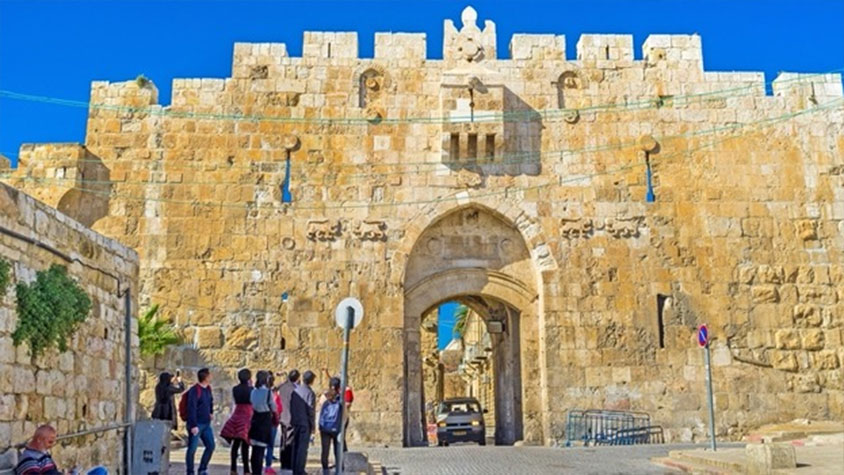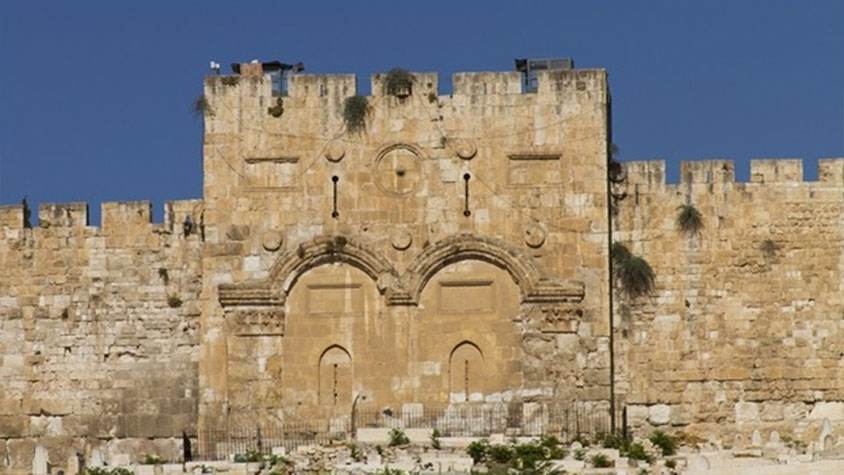There are many stories that connect to the walls of Jerusalem, but it is the story of its gates that holds particular significance. And while the gates in biblical times were in slightly different locations, the present gates offer passage into the four quarters of the city and are part of walls that were built in the early 16th century by Turkish Sultan Suleiman the Magnificent. Currently, there are seven open gates and four sealed gates. The open gates continue to serve residents and visitors streaming to Jerusalem’s markets, as well as entry to sacred and historic sites.

JAFFA GATE
Jaffa Gate, on the western side of the Old City, marked the end of the highway leading from the Jaffa coast and now leads into the Muslim and Armenian quarters. Because this gate also faces Hebron, where Abraham is buried, Arabs call it Bab el-Khalil or Hebron Gate, meaning “The Beloved of God.” It also offers easy access to the Tower of David Citadel Museum and a walk on the ramparts. The gate was removed in 1898 at the request of Kaiser Wilhelm II, before his visit to Jerusalem. The Ottoman authorities agreed to honor the request so the German Emperor would not have to dismount his horse, nor bow his head, to enter the city.
HEROD’S GATE
While its name bears that of the notorious Judean king, this gate has no connection with Herod. Built in 1875, it provides access to the Muslim quarter and to the Old City markets, hence its alternate name, Flowers Gate. It was once believed to have led to a structure mistakenly identified as Herod’s Palace.
DAMASCUS (NABLUS) GATE
Located on the northern wall, Damascus Gate is considered by many to be the busiest and most impressive of all Jerusalem’s gates. Built in 1537, the gate consists of one large center entrance originally intended for use by persons of high station, and two smaller side entrances for commoners.
NEW GATE
Leading into the Christian Quarter, the New Gate was not part of the original 16th-century walls; in fact, it was constructed relatively recently—in 1887. The New Gate was built with the permission of Sultan Abdul Hamid II and is located near the northwest corner of the city.
ZION GATE
Located in the south, Zion Gate was one of the main entrances used by the Israel Defense Forces in 1967 to enter and capture the Old City. The stones surrounding the gate still bear the pockmarks of weapons fired. This entrance leads to the Jewish and Armenian quarters.
DUNG GATE
This unusual name is derived from a gate that was located along the south wall in the time of Nehemiah (Nehemiah 2:13). The gate received its name because, starting in the 2nd century, refuse was hauled out of the city through this exit. Built in 1538, the Dung Gate is closest in proximity to the Temple Mount.
LIONS’ (ST. STEPHEN’S) GATE
Located in the east wall, this entrance, built in 1538, leads to the Via Dolorosa. Flanking each side of the gate are stone reliefs of two lions. Legend says Sultan Suleiman placed the figures there because he believed that if he did not construct a wall around Jerusalem he would be killed by lions. Israeli paratroopers from the 55th Paratroop Brigade, famously stormed through this gate during the Six-Day War to conquer the Temple Mount, after which they unfurled the Israeli flag above the Old City.
SEALED GATES
GOLDEN (MERCY) GATE
Among the oldest of the gates, the Golden Gate (or the Mercy Gate) faces the Mount of Olives on the eastern side of the Old City. This gate was constructed in the post-Byzantine period. According to Jewish tradition, the Messiah will enter Jerusalem through this gate. To prevent this, the Muslims sealed the gate during the rule of Suleiman.
HULDA GATES
The Hulda Gates are two sets of now-blocked gates in the southern wall of the Temple Mount in Jerusalem’s Old City.
- TRIPLE GATE – Dating back to Herodian times, the three arches of this gate are located in the south wall and are sealed shut.
- DOUBLE GATE – This entrance to the south wall is also sealed shut and dates back to Herodian times.
SINGLE GATE
Constructed prior to the Ottoman period along the southern wall, the now sealed gate led to the underground area of the Temple Mount known as Solomon’s Stables.
Originally posted at Israel Advantage Tours.


